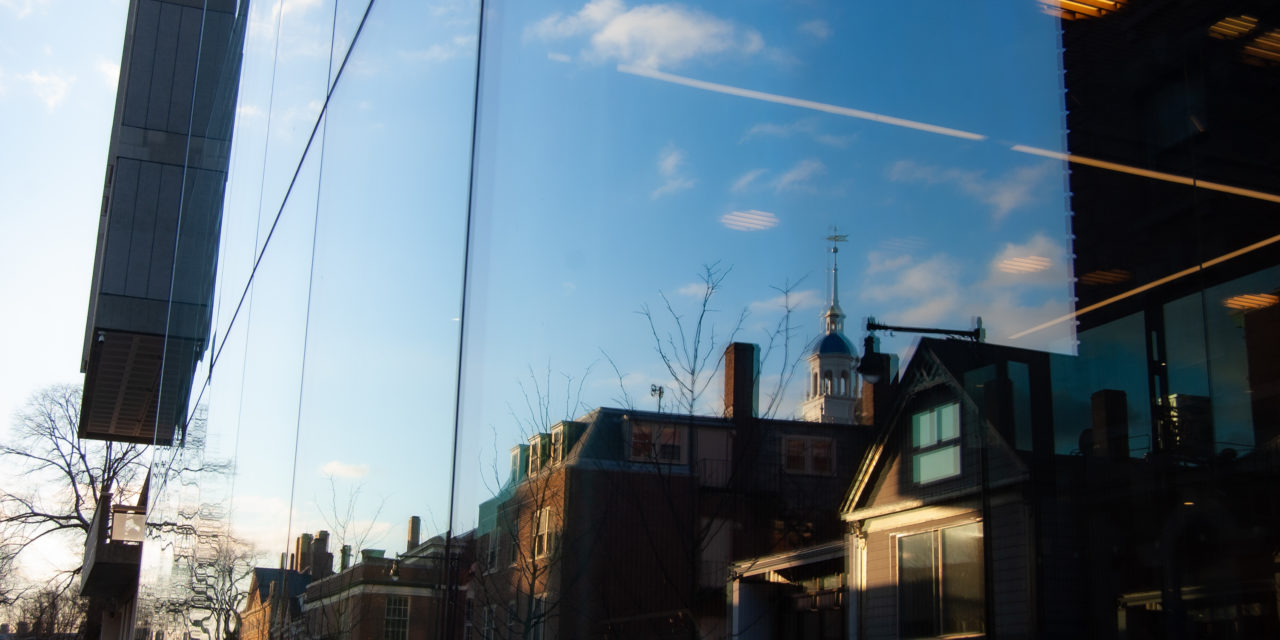Harvard spends a lot of time talking about its inclusive campus experience. Even a recent New York Times article discussed how college campuses act as a great equalizer, where students from every kind of socioeconomic background come together in a single body. But this same article also explored the cold reality of college in the time of coronavirus: as students were sent home, the gaps in privilege between rich and poor were thrown into sharp relief. I can think of nowhere on the planet with larger chasms in privilege than Harvard University.
It comes as no surprise that Harvard students are, on average, wealthier than the rest of the nation. With a median family income of nearly $170,000 compared to the national median of $59,000, Harvard students tend to sit in a more privileged space than their peers at other institutions. But about five percent of students come from families in the bottom fifth of all earners, surviving on the extensive financial aid Harvard provides, and every student relies on the labor of workers earning just above minimum wage to keep the campus together.
Harvard’s campus is a space that struggles to contain these yawning differences; when we buy a new boat for the crew team, it can run more than $40,000 — more than what some students’ families might make in a year. In the same moment that some students clean others’ bathrooms to earn a bit of cash, their peers pay thousands of dollars in dues to social clubs, and the university spends $700 a pop on lawn chairs for the picturesque Yard. Some students on financial aid are obligated to take on jobs at the university, an unnecessary and stressful expectation of service in return for education. But despite all of this, Harvard has managed to hold together its facade of the commons, kept up the pretense that it is a space for all comers.
The open manifestation of the inequality at Harvard, then, lies directly outside of its gates. Dozens of people suffering from homelessness gather outside of the Yard every day, settling in on the steps of a university with over $40 billion to beg for change. And every day, students — myself included — walk straight past them, unwilling to confront the brutality of poverty sitting in front of us. This past year, I slept twenty feet away from Massachusetts Avenue, comfortable in my bed even as people outside huddled into sleeping bags to confront the Boston winter. This is the most honest image of inequality at Harvard.
It is this image that coronavirus has suddenly brought through the gates. On campus, with nearly every student housed in spaces provided by the school, the student body can hide its gaps. One of the most elite institutions in the world can pretend that every student has the same opportunity to ‘win’ their place in the upper echelons of capitalism. But absent Harvard’s ‘equalizing spaces,’ it is apparent that not everyone has the same opportunity to climb to the top. I write this article safe and comfortable from my home in San Francisco. I write this article secure in the knowledge that my parents are still employed, that I still have access to medical care should I need it, and that the greatest inconveniences I will experience are uncertainty and boredom. I write this article in a place that not every member of my class has access to. Meanwhile, at Harvard, the university is forcing its workers to maintain their near-empty acres of real estate and housing by using their sick leave and work without protection, lest they lose their only source of income. Harvard is exploiting the same people who make their vaunted equalizing campus possible.
This past fall, Piper Winkler wrote a piece about Harvard’s history of working to protect the material interests of the rich. As she put it, Harvard has always been very skilled at “defend[ing] its class” — at holding up a facade of egalitarianism to protect its true material interests. Harvard hides behind an image of uplift, but there is no hiding in these times, no way to shuffle the acres of near-empty housing Harvard holds out of view. Until Harvard protects its workers, until Harvard extends support to its students through healthcare or other measures, until Harvard works to house the impoverished people sitting outside its gates, until it does all of these things and more, its equalizing claim remains a pretty lie. Harvard’s mask has slipped and revealed beneath is a cold-blooded austerity.
In the face of such a calculated campaign from our university, the only way to truly fight back is through solidarity. The workers who are being exploited, the students who were abruptly cut off from the tenuous lifeline of Harvard’s on-campus support system, and any other allies must unify to stand against the university’s laser focus on its corporate interests. The conflict here is simple. Each of the issues I listed in this article — homelessness, student inequality, the exploitation of workers — are symptoms of a larger struggle. This is class war, distilled to its extremes, and demands made of Harvard must come with that understanding. The university is showing us which side it’s on. To my fellow students: if you believe in our school, if you think that the equalizing proposition of campus is more than a marketing campaign, now is the time to show it. Stand up in solidarity, or sit in silence while the facade slips away.
Image Credit: Benjamin Roberts



